
Rima Das on location
Cinema’s rockstars are directors from Northeast
Saibal Chatterjee, New Delhi/Panaji
January 2019
Over the past five to six years, Indian cinema has been increasingly enriched by narrative features and documentaries coming out of Assam, Manipur, Meghalaya, Arunachal Pradesh, Nagaland, Sikkim and Mizoram. It is still only a trickle, but it is a trickle that is slowly but steadily gathering momentum.
It is never easy being an uncompromisingly independent filmmaker anywhere in India. But nowhere is it more difficult than in the Northeast. Several of the states there have no filmmaking facilities or movie screens. What they do have, however, are unique cultures, great stories and distinctive voices.
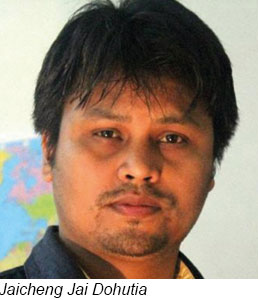 Several exciting new directors are driving this spurt in filmmaking activity that has not only attracted the attention of festival curators worldwide but has also been crowned with accolades and awards at the national and international levels. Among them are Manipur’s Haobam Paban Kumar, Meghalaya’s Pradip Kurbah, Wanphrang Diengdoh and Dominic Sangma, Arunachal Pradesh’s Sange Dorjee Thongdok, Nagaland’s Tiakumzuk Aier, Sikkim’s Tribeny Rai and Assam’s Bhaskar Hazarika and Jaicheng Jai Dohutia. While a few of these award-winning practitioners have formal training from the Satyajit Ray Film and Television Institute (SRFTI) in Kolkata, the others are entirely self-taught.
Several exciting new directors are driving this spurt in filmmaking activity that has not only attracted the attention of festival curators worldwide but has also been crowned with accolades and awards at the national and international levels. Among them are Manipur’s Haobam Paban Kumar, Meghalaya’s Pradip Kurbah, Wanphrang Diengdoh and Dominic Sangma, Arunachal Pradesh’s Sange Dorjee Thongdok, Nagaland’s Tiakumzuk Aier, Sikkim’s Tribeny Rai and Assam’s Bhaskar Hazarika and Jaicheng Jai Dohutia. While a few of these award-winning practitioners have formal training from the Satyajit Ray Film and Television Institute (SRFTI) in Kolkata, the others are entirely self-taught.
What binds these filmmakers together isn’t just the geographical location that they belong to, but also the fact that they have all inevitably come up the hard way. They still have to fight fierce battles to get their projects off the ground. “Raising money for independent films in languages that have small markets is very tough,” says Thongdok, who has made two feted indigenous feature films in his native Sherdukpen, a dialect that does not have a written script. No wonder these filmmakers cherish the openings that they have got and lose no opportunity to make the most of them. A bunch of them were at this year’s NFDC Film Bazaar in Goa held over November 20-24, to explore co-production avenues, seek tips from mentors and discuss distribution deals with the aim of building on the foundation that has been created.
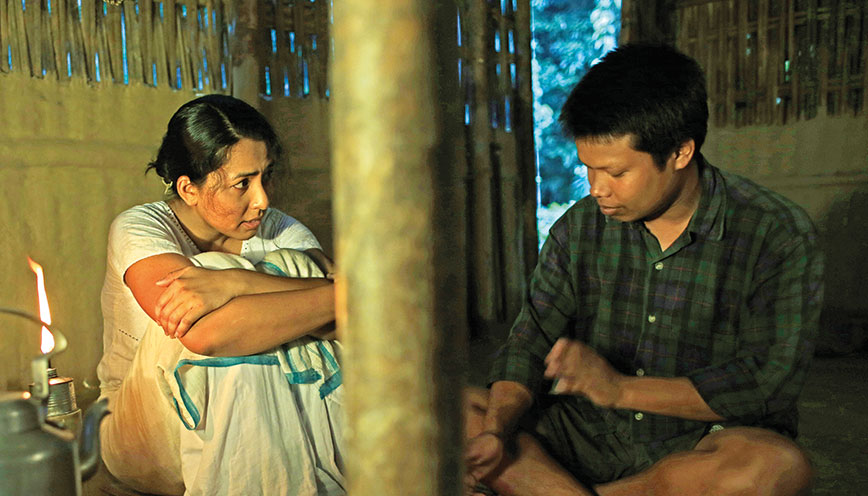 Haanduk sees insurgency through the eyes of a mother who loses her son
Haanduk sees insurgency through the eyes of a mother who loses her son
Hazarika’s second film, Aamis (Ravening), has won the 2018 Film Bazaar Recommends’ Facebook Award, while Guwahati-based debutant Jadab Mahanta’s Rukuni Koina (The Holy Bride) won the Film Bazaar Work-in-Progress Post-Production Award, which entitles the film to free digital intermediate in Prasad Labs and trailer promotions worth $3,000 in 300 movie halls across India.
Hazarika’s film, a radical psychological drama woven around the theme of cannibalism, is ready for distribution and will now benefit from free publicity on Facebook. The director has described Aamis as “a love story that begins in brightness but ends in darkness”. Hazarika is looking for a mid-2019 theatrical release.
Skill and technique
Of course, in the current scenario, Rima Das is the first name that springs to mind when talk veers round to the emerging filmmakers from the Northeast. With Village Rockstars, she has established herself in the forefront of the new flagbearers of independent cinema in India. The first Assamese film in 29 years (Jahnu Barua’s Halodhia Choraye Baodhan Khai won in 1988) to bag the National Award for Best Feature, Village Rockstars is also the first-ever film from the Northeast to be officially chosen to represent the world’s largest movie-producing nation at the Oscar Academy Awards.
The critical success of the independent film – it has been produced, written, directed, shot and edited by Das – has turned the spotlight back on a part of the country that, for about a decade, seemed to have dropped off the national cinema radar. Village Rockstars, an insightful, refreshingly intimate and deeply affecting portrait of an impoverished 10-year-old village girl who dreams of buying a guitar and forming a band, has definitely changed the way the rest of India perceives cinema from the Northeast.
The seeds of Village Rockstars were sown when Das was shooting her debut film, Antardrishti (Man with the Binoculars) in her village in Assam. “I saw this amazing group of children at a local musical gathering who were playing with fake instruments,” she recalls. “This sparked an idea and I approached them and suggested that we make a film together. They responded with enthusiasm and Village Rockstars materialised.” But it wasn’t as easy as it sounds: the film took “150 days of shooting over a period of four years”.
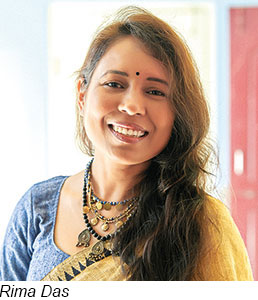 Village Rockstars eschews the tropes of conventional Indian movie melodrama and instead opts for a low-key tone to capture the ups and downs of rural life in Assam that is forever at the mercy of the elements. But it isn’t just natural calamities that Dhunu (the film’s heroine played by village girl Bhanita Das) has to contend with. She also has to negotiate societal pressures on account of her gender.
Village Rockstars eschews the tropes of conventional Indian movie melodrama and instead opts for a low-key tone to capture the ups and downs of rural life in Assam that is forever at the mercy of the elements. But it isn’t just natural calamities that Dhunu (the film’s heroine played by village girl Bhanita Das) has to contend with. She also has to negotiate societal pressures on account of her gender.
Rima Das has followed Village Rockstars up with Bulbul Can Sing, another film set in her neck of the woods. Like Village Rockstars, Bulbul Can Sing, about an adolescent girl up against rural orthodoxies as she tries to express her innermost yearnings, premiered at the Toronto International Film Festival before winning the Golden Gateway award at the MAMI Mumbai Film Festival. This was Das’ second MAMI triumph in succession. Village Rockstars had bagged the same trophy in 2017. Manipuri debutant Haobam Paban Kumar’s Loktak Lairembee (Lady of the Lake) won the Golden Gateway in 2016. So, for three years running, the Northeast has had an unprecedented stranglehold on the Mumbai Film Festival’s top prize.
 Village Rockstars captures the ups and downs of rural life in Assam
Village Rockstars captures the ups and downs of rural life in Assam
But did Rima Das and Village Rockstars emerge from nowhere at all? While it is true that she and other filmmakers of her ilk in the Northeast haven’t received any formal backing from government outfits or production banners, a handful of filmmakers from the region had been chipping away at the stumbling blocks for a few years before Das burst on the scene in 2017. Given the manner in which Das made her film singlehandedly in her own village with a cast of local children and other non-actors, one might be inclined to infer that she gave shape to her vision in a vacuum. She did not. Apart from being influenced by world cinema masterpieces that she saw while waiting for acting and modelling assignments to come her way in Mumbai, she probably also drew inspiration from the independent films that were being made in the Northeast earlier in the decade.
She would definitely have seen — or at least heard of — Thongdok’s Crossing Bridges, Arunachal’s first indigenous production, which was screened at the 2013 Mumbai Film Festival. One of the first films in the current cycle of critically acclaimed Northeastern features, Crossing Bridges, which narrates the semi-autobiographical story of a retrenched web designer who returns to his birthplace after an eight-year gap and reconnects with his own people and culture, is now available on Amazon Prime.
For his first film, Thongdok had to dig into his own savings. “I simply decided to make a film and not worry about the results,” says the Delhi University and SRFTI alumnus. That leap required enormous gumption. Arunachal Pradesh had virtually no cinema history or screens at that point. Nor did the state have any actors. Sonam, a Monpa-language film, was made in 2006, but the director was Assamese, Ahsan Muzid. Crossing Bridges was the first indigenous film from Arunachal Pradesh. Things have begun to change since. “A couple of screens have come up in Itanagar in the past year,” reveals Thongdok.
Mumbai-based JAR Pictures came on board for his second film, River Song, also in Sherdukpen, a dialect spoken by a few thousand people of West Kameng district. Thongdok was in the Co-Production Market of the NFDC Film Bazaar with a video pitch for his third film, Lonak — The Dark Year. “Lonak,” he reveals, “will be in a more commercial space. I will make the film in Hindi because I want to reach a wider audience. It will be set wholly in Arunachal Pradesh. I believe cinema can transcend boundaries of culture and language with ease.”
In a scene in Crossing Bridges, the protagonist, now a teacher in a village school, reads a passage about Holi from a Hindi textbook. He tells his students that Arunachal Pradesh, too, has a similar festival called Kro Chekor. One girl asks why this fact isn’t mentioned in the book. The teacher replies: “Because the outside world does not know us.” It is exactly this lack of knowledge that Thongdok wants to put an end to.
Coming from a part of the world that until about a decade ago had no telephones or electricity, his sense of urgency is understandable. “If we do not tell our own stories, who will?” This is why, adds the writer-director, “it is important to live with your own people to tell their stories”. There is, of course, no dearth of stories there.
Crossing Bridges was filmed in and around Thongdok’s native village, Shergaon. “The film is inspired by my own experiences,” he says. “The return to my village was quite a journey of rediscovery. I took note of everything that I felt and saw after being away for a long time.”
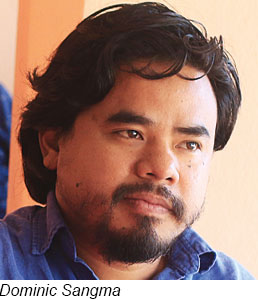 Another SRFTI graduate, Meghalaya’s Dominic Sangma, a few years Thongdok’s junior, has opted for an even more personal chapter from his life as the basis of his Garo-language debut film, Ma’Ama (Moan), an Indian-Chinese co-production that premiered in the International Competition of the Mumbai Film Festival this year. With a cast of actors drawn from his immediate family, including his father, elder brother and stepmother, the film probes the emotions of an octogenarian villager who has waited every day of the past 30 years to reunite with his dead wife.
Another SRFTI graduate, Meghalaya’s Dominic Sangma, a few years Thongdok’s junior, has opted for an even more personal chapter from his life as the basis of his Garo-language debut film, Ma’Ama (Moan), an Indian-Chinese co-production that premiered in the International Competition of the Mumbai Film Festival this year. With a cast of actors drawn from his immediate family, including his father, elder brother and stepmother, the film probes the emotions of an octogenarian villager who has waited every day of the past 30 years to reunite with his dead wife.
In this languid, pensive meta-narrative filmed in two schedules over 12 days, the old man’s filmmaker-son offers to document his ‘search’ for his lost soulmate. “Getting my father to talk about those painful memories took a lot of time. My eldest brother walked out of the shoot during the first schedule. I had to convince him to return for the next schedule,” says Sangma. “I have no memories of my mother. My imagination and the reality differed. Ma’Ama is my attempt to get a better sense of who she was.”
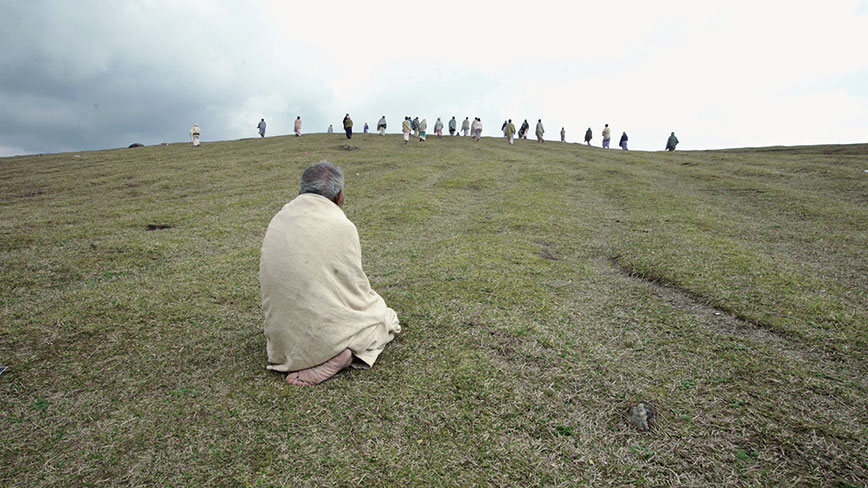 Ma'Ama's cast included members of Sangma's own family
Ma'Ama's cast included members of Sangma's own family
Personal stories, folk tales:
Personal, culture-specific tales define independent cinema in the Northeast. In a span of a year between 2015 and 2016, the region delivered a quartet of remarkable films: two from Assam — Hazarika’s Kothanodi (The River of Fables, 2015) and Jaicheng Jai Dohutia’s Haanduk (The Hidden Corner, 2016) — and one each from Manipur (Haobam Paban Kumar’s Loktak Lairembee) and Meghalaya (Pradip Kurbah’s Onaatah). All these films made waves at international festivals or won National Awards, confirming the advent of a new breed of Northeastern filmmakers capable of capturing boundary-pushing cinematic idioms that are at a distance from the conventional storytelling methods favoured by Assamese filmmakers not just of an earlier generation but also by contemporary directors.
Hazarika’s crowd-funded debut film, Kothanodi, which played at festivals in Busan, London and Los Angeles, puts a grim, grisly spin on folk tales that Assamese children have grown up with for over a century. It adapts four stories that serve to reveal facets of motherhood in ways that are fantastical, macabre and disturbing. An evil stepmother plots to kill her daughter when the girl’s merchant father is away, a greedy woman marries her daughter to a python in the hope of becoming richer than she already is, another woman gives birth to a vegetable and is banished from her village, and a fourth woman resolves to save her newborn from being buried alive.
 Hazarika, a history graduate from St Stephen’s College, Delhi, who did his master’s in film and drama from the University of Reading in the UK, modifies these traditional stories, changes their happy endings and offers a dark reimagining of the impulses of women faced with mentally and emotionally unsettling situations. The horror elements in Kothanodi do not stem from a force outside the lives of the characters, but from within their everyday existence, a narrative strategy that completely turns on its head the notion of safety in familiarity.
Hazarika, a history graduate from St Stephen’s College, Delhi, who did his master’s in film and drama from the University of Reading in the UK, modifies these traditional stories, changes their happy endings and offers a dark reimagining of the impulses of women faced with mentally and emotionally unsettling situations. The horror elements in Kothanodi do not stem from a force outside the lives of the characters, but from within their everyday existence, a narrative strategy that completely turns on its head the notion of safety in familiarity.
Dohutia, unlike Hazarika, did not go to any film school and made Haanduk entirely on his own steam, but his Moran-language debut feature also represents a marked departure from conventional modes of expression. It sees insurgency through the eyes of a mother who loses her son, a young man who joined a militant outfit. The boy’s bullet-ridden body arrives home. The mother performs the last rites only to be told that the body is probably not her son’s.
 Crossing Bridges was the first indigenous film from Arunachal Pradesh
Crossing Bridges was the first indigenous film from Arunachal Pradesh
Haanduk took eight years to fructify, but the film was shot in 19 days once all the money that Dohutia needed — it came from his own savings and contributions from friends and family — was in place. That film’s study of the impact of violence on a remote tribal community is marked by a deep concern for the erosion of mankind’s sensitivity. At a screening of the film in New Delhi last year, Dohutia had said: “We have seen so much development in terms of science and technology, but not much in terms of humanity. We are yet to reach a point where humanity would be regarded as our biggest concern.”
Leading the charge of this new Northeast cinema is Imphal-based Haobam Paban Kumar. His feature debut, Loktak Lairembee (Lady of the Lake), made it to the Forum section of the 2017 Berlin Film Festival, the first Manipuri feature-length entry at a major international festival since Aribam Syam Sarm’s Ishanou was screened in Cannes in 1991.
Loktak Lairembee is about a young fisherman who lives with the constant threat of being evicted from his hut on a floating biomass in the river. One day he finds a gun and his life changes forever — it gives him an air of confidence bordering on arrogance. Paban Kumar is an alumnus of SRFTI, an institute he went to after assisting Syam Sarma for six years. The apprenticeship under a master and the training at the Kolkata institute have shaped his craftsmanship.
 Pradip Kurbah, a two-time National Award winner, carries the mantle of an ‘elder’ statesman in Meghalaya’s independent cinema space, having already made three narrative features, one of which, Iewduh, is currently receiving finishing touches. The new film is set in the eponymous market in Shillong and tells everyday stories about ordinary people whose lives are intertwined with the space. “Iewduh has been filmed in actual locations with a mix of professional actors and real people,” says Kurbah. “The principal characters are all drawn from reality.”
Pradip Kurbah, a two-time National Award winner, carries the mantle of an ‘elder’ statesman in Meghalaya’s independent cinema space, having already made three narrative features, one of which, Iewduh, is currently receiving finishing touches. The new film is set in the eponymous market in Shillong and tells everyday stories about ordinary people whose lives are intertwined with the space. “Iewduh has been filmed in actual locations with a mix of professional actors and real people,” says Kurbah. “The principal characters are all drawn from reality.”
Among the characters who people Iewduh is a young man who sits outside a public toilet and collects cash from users of the facility and an old man inflicted by Alzheimer’s who has been abandoned in the market by his son and daughter-in-law. The film has been funded by a leading Northeastern film distributor, Shankar Lall Goenka.
 Onaatah, directed by Pradip Kurbah explores the trauma of rape
Onaatah, directed by Pradip Kurbah explores the trauma of rape
Kurbah’s previous directorial venture, Onaatah, which explored the trauma of rape through the story of a nurse assaulted in a desolate stretch of Shillong, not only fetched Kurbah a National Award, it is now also on Netflix, the first film from the Northeast to stream on the platform. The film has been remade in Marathi under veteran Bollywood actor-director Satish Kaushik’s production banner.
A Hindi version of Onaatah is also in the works. In the words of Kaushik: “I was blown away by the power of simplicity that the Onaatah director brings to bear upon a sensitive theme. I instantly felt that the film should be remade for a pan-India audience.”
 In Meghalaya, Onaatah ran for five weeks on a single screen until Salman Khan starrer Sultan came along and dislodged it. “I then travelled with the film for four months across the villages of the Khasi and Jaintia Hills and showed it to as many people as I could,” says Kurbah, whose narrative feature debut was RI: Homeland of Uncertainty (2013).
In Meghalaya, Onaatah ran for five weeks on a single screen until Salman Khan starrer Sultan came along and dislodged it. “I then travelled with the film for four months across the villages of the Khasi and Jaintia Hills and showed it to as many people as I could,” says Kurbah, whose narrative feature debut was RI: Homeland of Uncertainty (2013).
No cinema halls
Rima Das herself had given notice of her strikingly unassuming and highly effective filmmaking style with her very first film, Antardrishti. It tells the story of a retired geography teacher in a small Assam village whose life is thrown into turmoil when his musician-son gifts him a pair of binoculars. Although the film garnered positive critical notices, it was difficult finding takers for it in the exhibition circuit. That is when Das decided to go totally independent and create a new orbit for herself.
 Loktak Lairembee, directed by Haobam Paban Kumar, is about a fisherman who lives with the threat of being evicted from his fragile hut on a river
Loktak Lairembee, directed by Haobam Paban Kumar, is about a fisherman who lives with the threat of being evicted from his fragile hut on a river
Indeed, distribution is the key challenge facing filmmakers in the Northeast. While Village Rockstars benefitted commercially from its nomination to the Oscars, other films aren’t so lucky. Says Mizo documentary filmmaker Napoleon R.Z. Thanga, who led a small delegation of filmmakers and actors from his state to the 49th International Film Festival of India in Goa: “There are no cinema halls in Mizoram, so we have to rely on community-based commercial screenings. This means that the filmmaker himself has to double as a distributor and take the film around personally to prevent it from being pirated.”
Thongdok believes that it isn’t enough for independent films to be on streaming platforms. “Only a minuscule percentage of people watch independent films online. You’ve got to take your film to the villages and small towns in order to reach the people it is meant for,” he says.
The fact that these filmmakers aren’t giving up is evident in the new projects that have been completed or are in the pipeline. Anupam Kaushik Borah, trained at the National School of Drama, has made Bornodi Bhotiai (In Love, By the River), set on the island of Majuli where he grew up. Musician-filmmaker Wanphrang Diengdoh’s Shillong-set Khasi film Lorni — The Flaneur, featuring Adil Hussain in the lead role of a man who aspires to be a detective, is in post-production.
Both Dohutia and Sangma have new projects on the anvil. The two films, the former’s Hangdan and the latter’s Bichal Sal (Rapture), were in the Co-Production Market of the NFDC Film Bazaar earlier this month. And with Kurbah having completed his third film and Thongdok in the process of setting up his, there is much for cineastes to look forward to from the Northeast.
Comments
-

Vinaya Patil - Jan. 29, 2019, 3:53 p.m.
I, unfortunately, came across the Civil Society, as late as today, at a meeting with another senior journalist, on her desk. I must tell you that it is after a long time that I couldn't put down a news magazine. It was wonderful - not just with the stories, but the simple designing, plain editing and a very pleasant appeal. As a journalist myself, I admire and respect your work. Keep at it, you guys!



